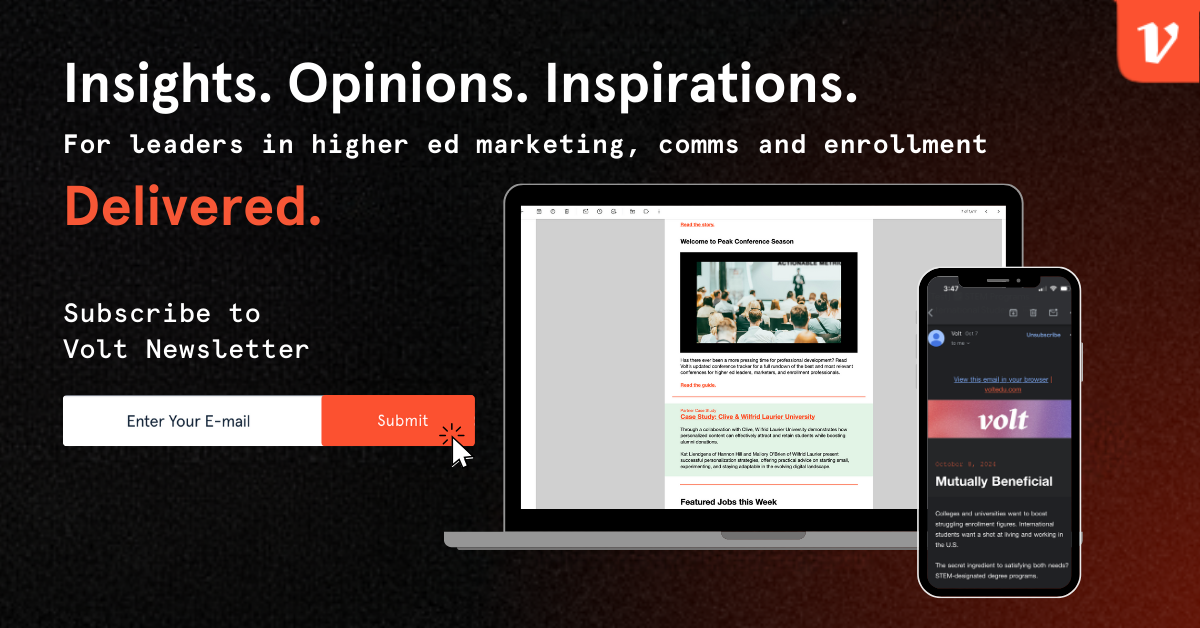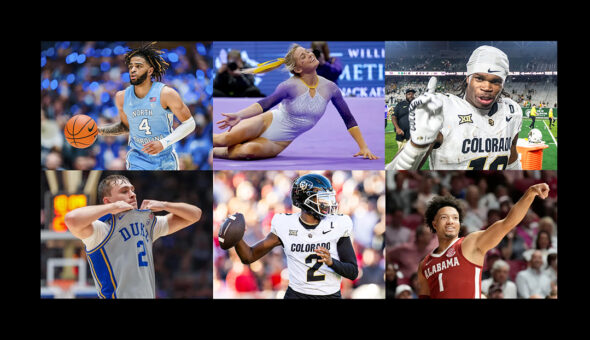49. How They Came to Teach and Study Their Area of Focus
This type of content is all about humanizing your faculty members and helping students identify with them. When you publish this type of content, you build a connection between your prospective and current students and your faculty. This is a big part of a student’s decision to enroll in your university. The University of Rhode Island sets a great example as to what you should be looking for in these blog posts for your institution.
50. Ways to Get Involved with Undergraduate Research
This is a helpful blog post for current students but there is a secondary benefit to prospective students who have a clear picture of their plans once enrolled in your university. Make sure you target faculty members who are working on especially interesting projects to maximize the marketing impact of this content.
51. Get to Know the Dean
The University of Nebraska-Lincoln initially launched the incredible “Perls of Knowledge” video series in 2014. (Check out the original videos. They are comedy gold.) There are many different ways to put a creative spin on this if your university gives this blog idea a try. Check out Texas A&M’s post about their current dean of education and human development. These posts help humanize the current dean to your student body, showing the dean as approachable and willing to help
Category 4: From Your Admissions Staff
52. Student Ambassadors Answer FAQs
I can’t think of an easier or better way to become a trusted resource in higher education than asking the people who interact with your prospective students daily to answer the most frequently asked questions. You could channel Brown University and feature student ambassadors with their majors and short biographies. Provide an email in which students, both current and prospective alike, can independently reach out to these students to add another dimension of personalization.
53. Important Deadlines
Sure, you have this information on a web page and your admissions brochures. You still need to make sure you’re blogging about upcoming deadlines as they approach. Don’t assume your prospective and admitted students are setting alerts and reminders throughout the admissions process. Examples include posting a “number of days countdown” or a “save the date” for these important deadlines on social media pages such as Linkedin, Instagram and Twitter.
54. Guide to Making the Most of Your Rising Senior (HS) Summer
Bob Jones University exemplifies this idea. It’s a clear example of what I’ve described above in terms of answering your prospective students’ most-asked questions. If you work for a graduate or professional school, tweak this content appropriately.
55. Guide to Writing College Essays
This topic is in the current student section, but it’s a topic worth writing from multiple perspectives. Use Harvard University’s article regarding this topic as a solid starting point. Your prospective students will appreciate reading what your admissions staff is looking for in a college essay. You can even go the extra mile and include some of your staff’s favorite college essays that they’ve reviewed to get a better idea of what they hope to see from students.
56. The Right Questions to Ask at College Fairs
Have you ever had a student walk up to your table at a college fair and ask “So, tell me why I should apply to your school?” It’s the worst. Set them up for success by publishing content about what they should be asking at college fairs instead.
57. Understanding the FAFSA
You may think you’ve covered the FAFSA process, but I guarantee you that there is some aspect of the form or process that you haven’t covered. Florida State University goes the extra mile here and includes both a rundown of the process on its website and links to the official FAFSA website.
58. Understanding the Admissions Process
This is pretty high-level content. You don’t have to go into crazy detail here, but you should be transparent about what the process is for gaining admission at your institution. What forms are required? How long does it generally take to review applications? Who reviews them? When are scholarship decisions made, and are these decisions based on different criteria? Be as open and transparent as possible with your prospective students.
59. Advice for Standing out on Your Application
Your admissions staff is probably asked this question all the time. It’s a frequently asked question for a reason. I know you have a holistic process for reviewing applications, but surely there are things that students can do that signal to your admissions team that they are a good fit, right? Label those actions and share them with your prospective students.
60. Explain Any Unique Aspects of Your Admissions Process
When I was applying to colleges, every university had something special about its application process that made them unique. Wake Forest University had a prompt that simply asked you to create a top-10 list with no other context, while Lehigh University asked you what your favorite riddle was and why. MIT, however, has an entirely different process from other institutions and has devoted an entire website to admissions. If your school or college has something similar, make sure you are sharing what is unique and how students should address it.
61. What Does A “Holistic Review” of Applications Mean to Your Institution?
We’re returning to the idea of the holistic review of applications. As much as possible, go into what this means at your institution. University of Texas Austin offers a solid starting point for the possibilities of what you could do with this idea.
62. Guide to Acing College Interviews
Yes, I covered this above with current students, but again, your prospective students will appreciate hearing different perspectives on this potentially crucial part of the admissions process.
63. Advice If You Land on the Waitlist
Earlier in this list, I suggested sharing the success stories of students who were originally waitlisted at your university. This example, however, is about sharing information on the process. If students are waitlisted, do they need to submit any forms to display interest in the school or college? Is there a general time of the year when they may hear back from the admissions staff? Is there anything they can submit to increase their odds of being accepted? All of these questions could be vital for keeping waitlisted applicants interested and informed of your process.
64. Guide to Visiting Campus
Campus visits are a crucial part of the admissions process. Make sure your prospective students and their parents know what to expect and how to make the most of their visits. This may include a campus map, buildings to see, accommodations near campus for families traveling from afar and so forth. Penn State does an excellent job laying out ways to plan a visit, including local attractions and reliable accommodations for overnight stays.
65. Must-Take Photos During Your Time on Campus
Some campuses have particular statues, buildings or viewpoints that are simply a must-see on campus. If you’re lucky enough to have one of these assets, share them with your prospective students and get them feeling a little school pride before they’ve even enrolled. If applicable, be sure to include the traditions that make these locations unique. Texas A&M University gives a brief history of the Century Tree and other campus locations.
66. Where to Find Scholarships
Just because an admitted student didn’t receive a scholarship from your university, doesn’t mean there aren’t other options out there. Help these admitted students by sharing external options for discovering scholarships. St. Edward’s University offers something similar on the Scholarship Search Sites” page. Fordham University channels this idea with its “Reputable Scholarship Sites” post.
67. Guide to Orientation
Although the topic of making the most of orientation is probably best left to your current students, who have gone through the process fairly recently, you should also be sharing logistical information about the event. This would also be a good way to wrap up your packing list post with other useful pieces of information, such as deadlines, directions and activities.
68. Campus Mindfulness Programs
Let’s face it: college is stressful. Your institution should incorporate helpful ways in which students could better minimize and deal with college-related pressure. Wake Forest University takes a solid crack at this by listing easy ways to practice mindfulness for the average student, with links to more helpful resources dealing with mental health.
69. Infographics/Overview of Each Year’s Entering Class
This content will be a big hit with your incoming class and their families who are as excited as can be about the journey that lies ahead. Capitalize on that sense of excitement by sharing some visually dynamic content about your incoming class.
Category 5: College Campus Potpourri
70. Enrolled Students: Making the Decision to Enroll
Don’t wait until your admitted students have arrived on campus to utilize them as ambassadors. As students submit deposits to your university, have them share their reasons for enrolling. That type of social proof can be very persuasive to those students still on the fence. Wake Forest University channels this by including instructions on their letters of acceptance to cover an item with toilet paper to echo their longstanding tradition of “rolling” the quad in toilet paper after a big win. Admitted applicants are encouraged to post their item with a #WFU27 on social media.
71. Career Services Advice for Entering Students
When I was a freshman in college, my university’s office of career and personal development was made available to me the second I stepped on campus. Make sure your students know that your career services office can be a resource to them before they reach their final years of college and need a job or an internship.














